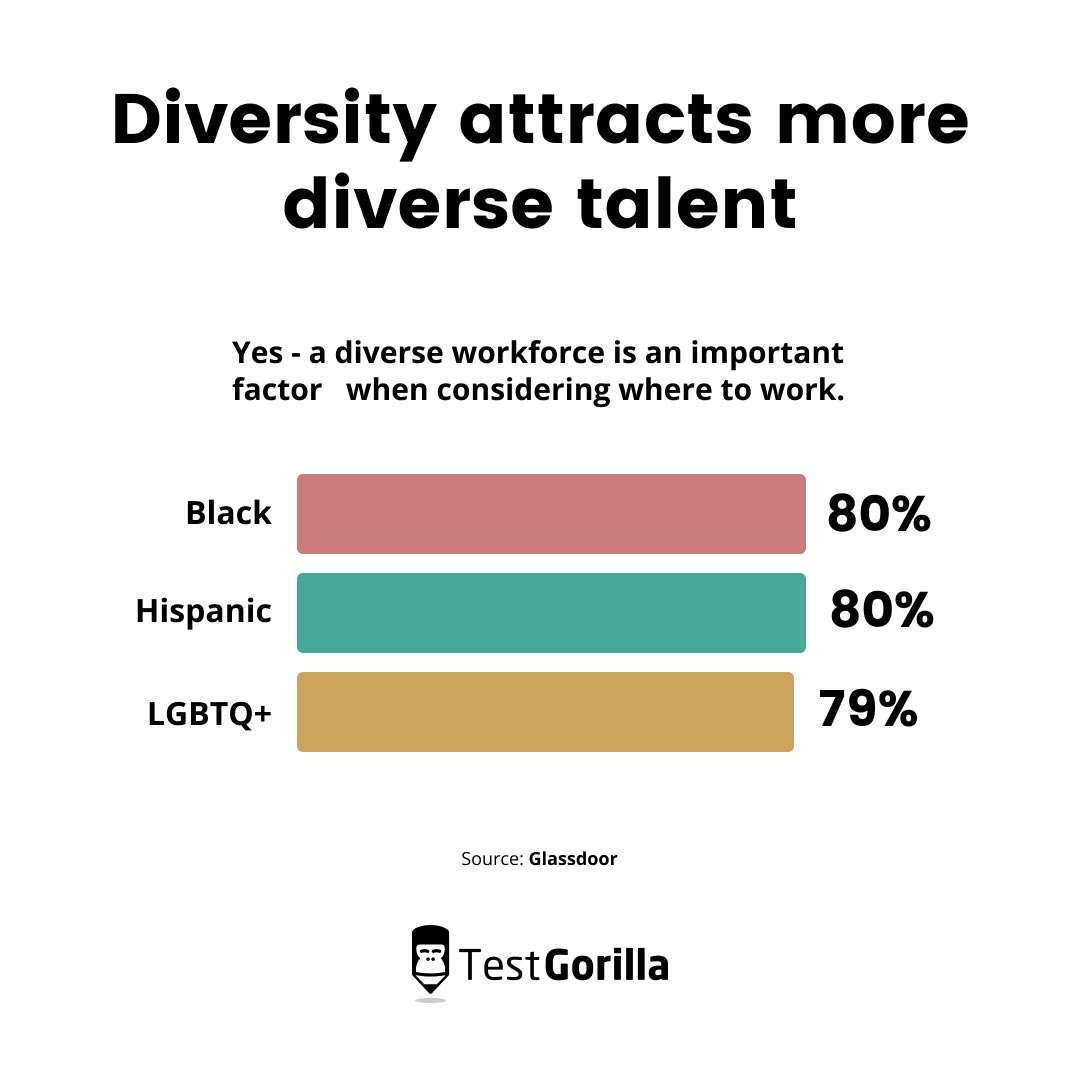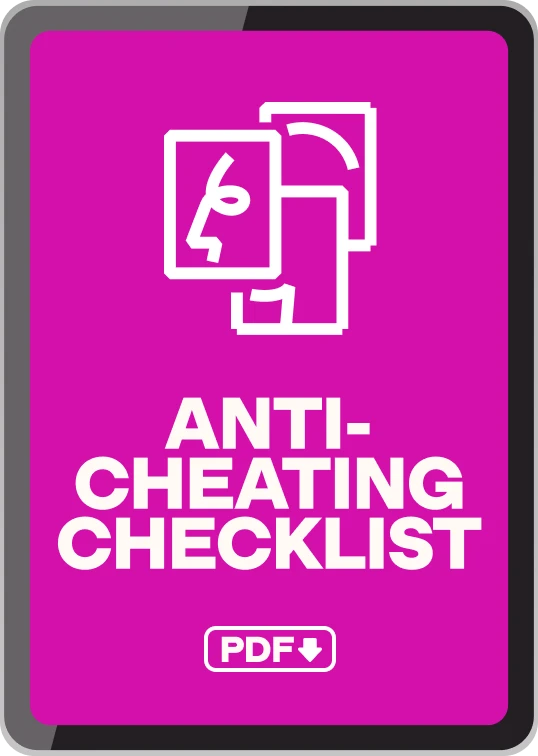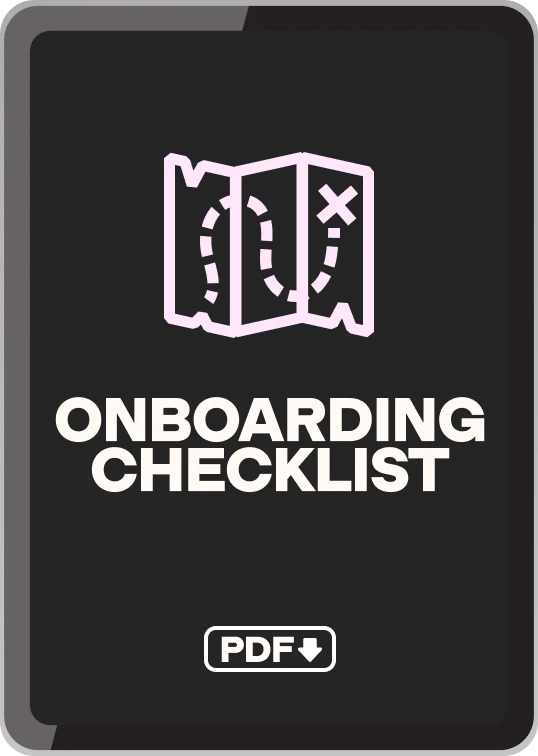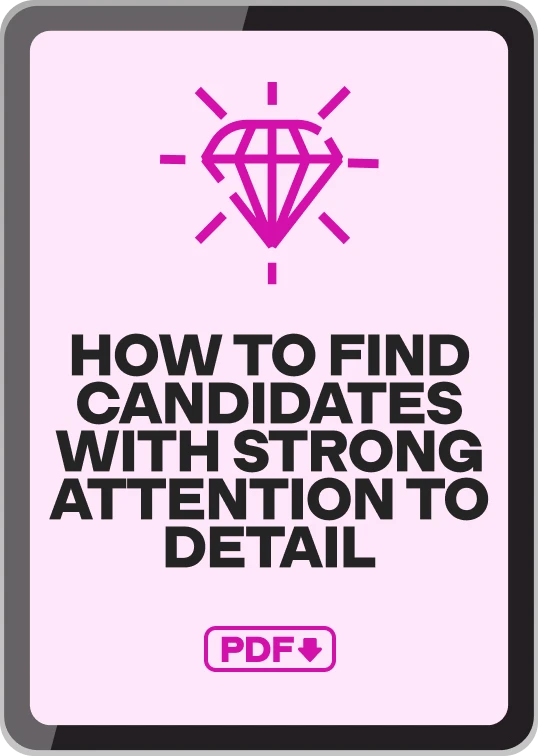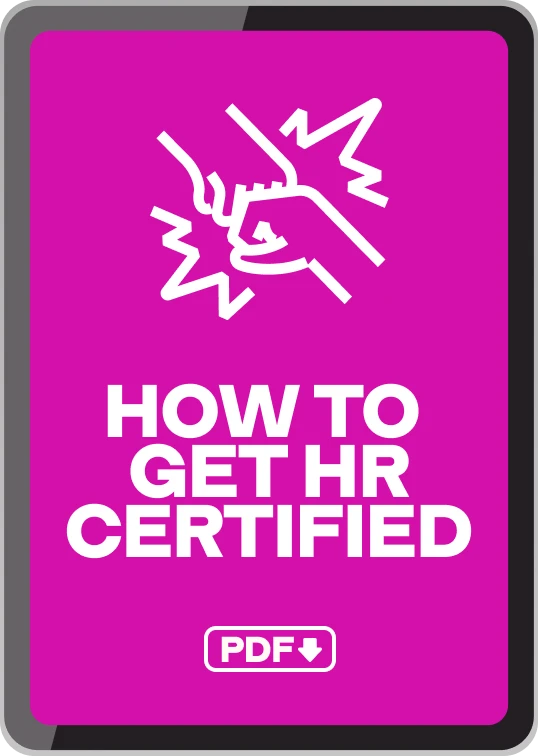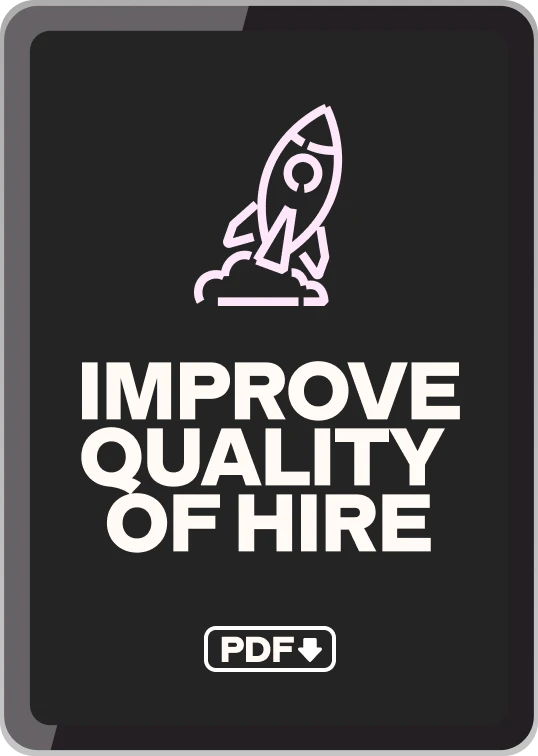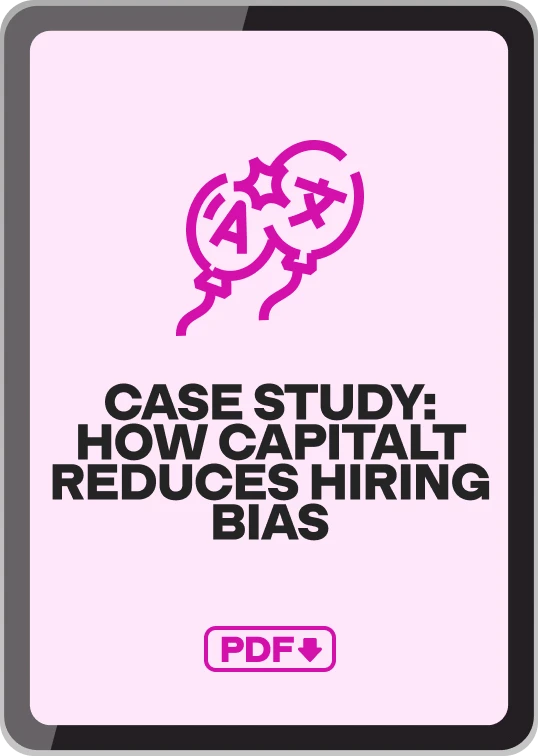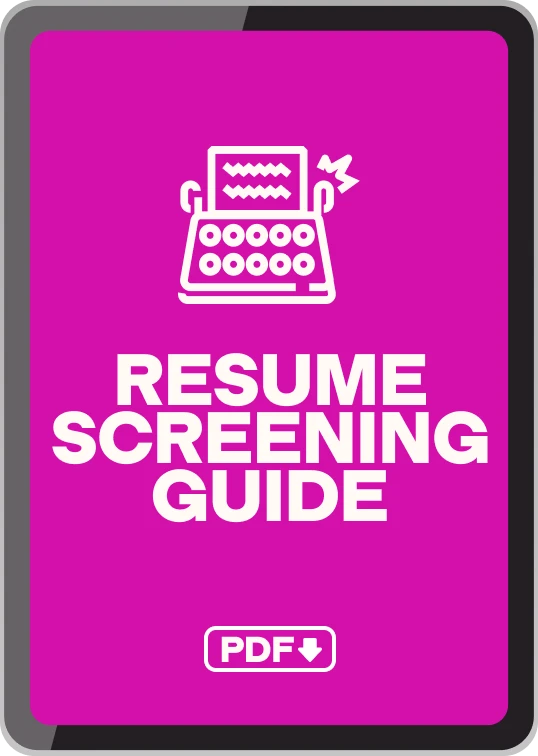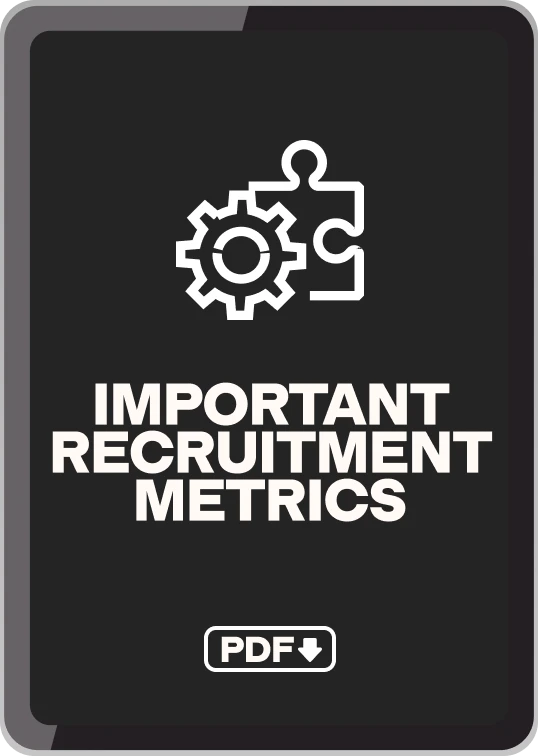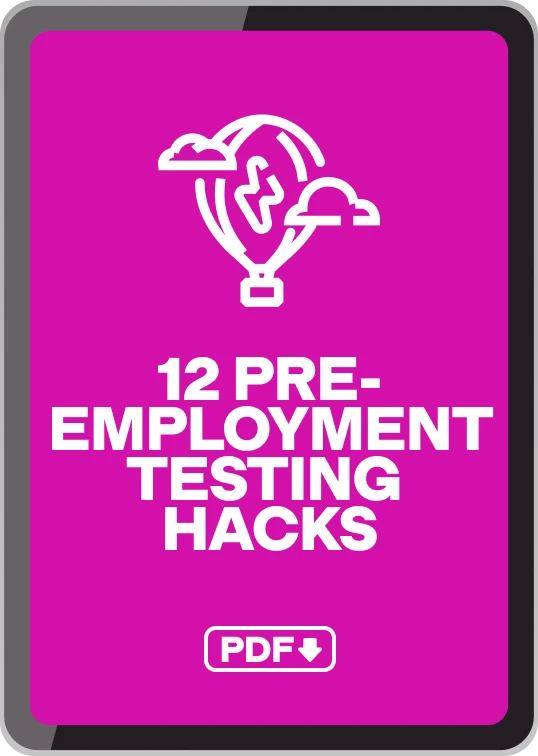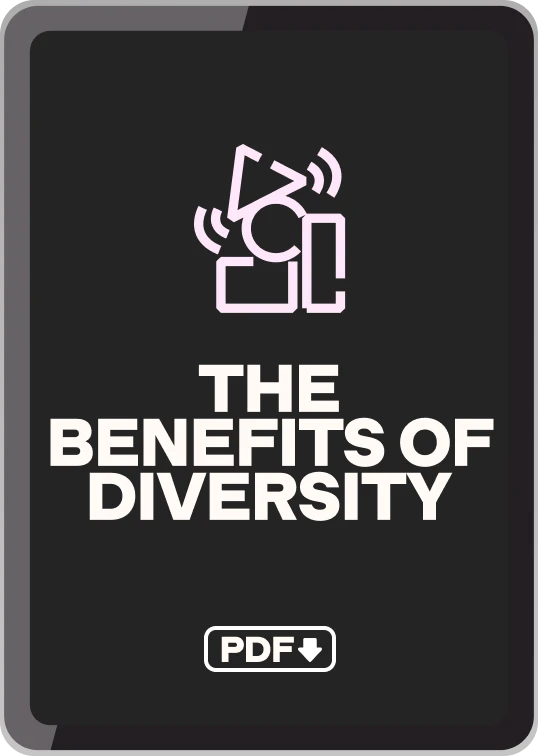Diverse candidates: How to leverage this talent acquisition strategy and build an inclusive team
Far too many companies treat diversity like a trend or a corporate “checkbox.”
However, many organizations don’t try to do this. They’re just trying their best to provide equal opportunities and enhance their workforces.
Even so, these diversity targets often end up failing, with little to no added diversity after each hiring initiative.
But hiring diverse candidates is more than just targets. It’s about building a culture of inclusivity and designing a recruitment process that gets them through the door.
With the right care, hiring diverse candidates can be one of the best talent acquisition strategies you have. Diverse candidates attract more diverse candidates, so once you design the right system, it builds on itself.
This blog discusses the importance and benefits of hiring diverse candidates. It also offers 8 best practices for attracting diverse candidates, like using pre-employment tests and partnering with diverse organizations.
Table of contents
- What are diverse candidates?
- Why is hiring diverse candidates important?
- The benefits of a diverse pool of candidates
- The 8 best practices for leveraging diverse candidates to acquire top talent
- Our 3 examples of companies succeeding with hiring diverse candidates as a talent acquisition strategy
- Attract and recruit more diverse candidates with skills-based hiring
What are diverse candidates?
The term diverse candidates generally refers to marginalized candidate groups, such as women, ethnic minorities, racial minorities, LGBTQ+ individuals, and disabled people.
However, if you look at it more literally, diverse candidates are simply potential hires that make your workforce more diverse. This means a diverse candidate could be an employee over the age of 45 because the rest of your staff is an average age of 30.
Attracting diverse candidates is important for all companies, but it’s particularly vital when facing certain talent acquisition trends, such as recruiting remote or contingent workers.
Many of these candidates belong to marginalized demographics. For example, many disabled workers are remote employees. This means that if you want to take advantage of these hiring trends, you need to optimize your strategy for diverse candidates.
Why is hiring diverse candidates important?
Learning how to recruit diverse candidates has always been crucial for companies, but we’ve never had a perfect strategy for executing it.
Traditionally, many organizations have attempted to boost diversity through DE&I targets. Although these initiatives are well-intentioned, they can be problematic. With DE&I targets, you may end up hiring someone as a token diverse candidate, not for their skills.
To read about this issue and more, check out our blog on DE&I target problems.
However, it can be said that recent events have only made hiring diverse candidates more important.
We’ve been through many social upheavals and human rights breakthroughs in the past few decades. Organizations not only need to hire diverse candidates, but they also need to show their support through corporate responsibility.
Knowing how to hire diverse candidates is also essential due to so many companies recruiting internationally. We’re able to reach beyond our borders, thanks to remote work, and that means we can reach talent we never have before.
Let’s take a look at why diverse hiring is important to employers
It's important to a company's corporate social justice strategy: Candidates don’t want to just hear that you care about social issues; they want you to take action. Hiring diverse candidates is a powerful way to show them that you aren’t just engaging in diversity washing.
It's the right thing to do: Diverse candidates deserve a fair chance at every position they’re qualified for. It’s especially important due to issues like the racial wealth gap and the gender employment gap.
It attracts top talent: Workers want a company that promotes diversity, and they’ll keep looking until they find an inclusive organization.
It creates a team with different perspectives: Diversity means diverse thinking, and diverse thinking promotes creativity and innovation.
Points three and four are the top reasons that diversity is linked to helping companies stay competitive in their industries.
In fact, the Workforce 2000 study from 1987 claimed that organizations would need to diversify to stay competitive with other regions. This study is one of the most famous reports in the history of DE&I and helped push many modern practices.[1]
Recruiting diverse candidates is important for your employees, too
Increasing workplace diversity nurtures an inclusive atmosphere, which makes employees feel safer, happier, and more satisfied with their job.
Diversity also boosts creative thinking, leading to better collaboration and team outcomes.
Does it sound like we’re repeating ourselves? That’s because the innovation brought by diversity helps both companies and employees.
The benefits of a diverse pool of candidates
Attracting diverse candidates has many advantages, including improved productivity and increasing your overall talent pool.
You can read through our article on the benefits of diversity for a deep dive.
But for now, let’s take a quick look at its five major advantages.
1. Improved productivity and performance
It’s well known that diversity boosts productivity. Numerous studies have been done on the subject, and recent studies have only been delving into it further.
An article from Harvard Business Review studies these reports and comes to a logical conclusion: Diverse teams take away a “stale but comfortable” feeling and replace it with a “less comfortable” feeling that drives productivity and performance.[2]
An atmosphere with different people, perspectives, and opinions challenges our brains to think outside the box and stay sharp.
2. Increased creativity and innovation
Some of the most famous benefits of diverse candidates: boosting creativity and driving innovation.[3]
Diverse minds mean diverse perspectives. For example, a marketer who’s a Black woman possesses deeper insights into how to target a product at an audience of women of color.
And businesses take this point seriously. A report from Forbes found that 85% of business executives believe that a diverse and inclusive workforce is critical to fostering new perspectives and ideas that drive innovation.[4]
3. Companies with diverse teams are more profitable
If diversity impacts innovation, it isn’t hard to make the connection that it also boosts profits.
Research shows that ethnically diverse companies are 36% more likely to outperform less diverse companies, and gender-diverse companies are 25% more likely.
A report from Morgan Stanley backs this up. In 2022, the share prices of companies that are more gender-diverse than their competitors outperformed by:
3.0% in Japan
2.0% in North America
This huge boost in performance and revenue is one of the main reasons why diverse talent pools are key factors in building a high-performing team.
4. Diversity attracts more diverse talent
If you want to build a rich, diverse workforce – start hiring diverse candidates, and it will build on itself.
This isn’t just because you can leverage a diverse employee referral program. Workers want to work for a diverse company, and the more you show them your values, the more they'll notice your organization.
According to a survey by Glassdoor, 76% of workers say that a diverse workforce is an important factor when considering where to work.
But the number jumps up a few points when you ask marginalized candidates. Around 80% of Black, Hispanic, and LGBTQ+ workers say the same thing.
This is because diverse employees may feel more comfortable in a diverse environment. They won’t feel like a “token diverse hire.”
Diverse candidates also appreciate an inclusive workforce because it shows them your stance on diversity. And actions speak louder than diversity claims on a website.
5. A much larger talent pool
Learning how to hire diverse candidates and building an inclusive process opens your talent pool exponentially.
Why is a special process necessary for hiring diverse candidates? Because there are a lot of candidates that aren’t properly engaged in a traditional hiring process, such as:
Women
Ethnic minorities
Racial minorities
Older workers
Disabled people
Gender non-conforming folks
LGBTQ+ people
Traditional hiring methods, such as requiring four-year degrees, screen out many diverse (and otherwise capable) candidates. This means you need an innovative hiring process.
Opening the door to diverse candidates widens your talent pool – but creating a process that was designed for diverse candidates makes your pool an ocean.
Let’s learn how to build one.
The 8 best practices for leveraging diverse candidates to acquire top talent
A diverse pool of candidates gives you access to innovation and skills during a time when talent is short and skills are a currency.
Here are our top strategies for designing a hiring process that gets diverse candidates through the door.
Tactics for using diversity in talent acquisition: A summary
Strategies | Description |
1. Adopt skills-based hiring | Focus on candidate skills and toss away unneeded job requirements |
2. Use talent assessments to find the most qualified candidates without bias | Gauge candidate skills objectively and hire whoever scores the best |
3. Use structured interviews to reduce the interviewer's reliance on charisma | Give all candidates equal footing with standardized interviews that only use relevant questions |
4. Promote a culture of inclusion, not just token diverse hires | Work to build a culture of safe inclusivity to attract more diverse candidates |
5. Hire for culture add, not culture fit | Encourage diversity by hiring people with similar values but unique perspectives |
6. Show your culture, inclusivity, and current diversity | Broadcast your company’s views on diversity through recruitment marketing |
7. Assess your current hiring process | Analyze your current hiring process and look for diversity bottlenecks |
8. Build relationships with diverse organizations, communities, and colleges | Partner with minority-serving institutions to find amazing candidates |
1. Adopt skills-based hiring
Skills-based hiring is when you use skills, competencies, and capabilities as the main factor when determining if a candidate is a match for your role.
This method is one of the top ways to promote diverse hiring. In 2022, 91.1% of organizations that adopted skills-based hiring saw an increase in diversity.
Here are a few of the reasons why skills-based practices help you hire diverse candidates:
No reliance on resumes: Resumes can be a big source of bias, including bias against work history, age, gender, and even name. When you use skills tests to hire, you don’t need to rely on these unreliable documents anymore.
No reliance on educational history: Many diverse candidates don’t possess a four-year degree. This requirement automatically screens out 83% of Hispanic candidates and 76% of Black candidates. Assessing skills first enables you to toss away the reliance on college degrees.
Assesses language proficiency: Rather than asking for “native speakers only,” you can simply administer language tests to candidates. This opens the door for millions more talented professionals and gives you access to amazing candidate pools.
The best way to conduct skills-based hiring is through the use of skills tests.
Don’t worry, we’ll talk about them next.
2. Use talent assessments to find the most qualified candidates without bias
How do you evaluate candidate skills without screening resumes and looking for college degrees? By harnessing data driven recruiting methods like talent assessments.
Skills tests objectively assess skills, capabilities, and behavioral competencies, regardless of background, degrees, or certifications.
With more than 300 assessments designed by industry experts, TestGorilla’s talent assessment tests help teams make screening choices based on test results, rather than allowing unconscious bias to dominate initial screening selections.
Here’s what candidate shortlisting looks like through TestGorilla:
You can use TestGorilla to quickly sort candidates by test score, so you can see who performed the highest according to your own benchmark data.
This ensures you choose who’s truly the best match for the role – which means you don’t let unconscious bias or DE&I targets influence you.
3. Use structured interviews to reduce the interviewer's reliance on charisma
The interview process carries a lot of weight in the hiring process, and traditional job interviews could filter out diverse candidates.
Traditional interviews rely heavily on charisma, confidence, physical appearance, and likeability.
This opens the door for major bias against countless groups of people. For example, a hiring manager may judge a candidate based on a lack of eye contact. However, autistic people find eye contact extremely uncomfortable, and it’s even considered rude in Japanese culture.
The solution to this is standardizing the process by designing structured interviews. These interviews have predetermined criteria and a script of questions that you ask every candidate in the same order.
This approach helps employers stay on course and ask only role-relevant questions.
Structured interviews reveal true capability and predict up to 26% of job performance, whereas traditional interviews predict only 14%.[5]
To read our full guide on the subject, check out our article on structured interviews.
4. Promote a culture of inclusion, not just token diverse hires
One of the concerns with traditional DE&I targets is that companies might simply look for diverse candidates to fill seats without any major change to the company.
At best, this can be ineffective, but at its worst, it can seem like your company is making “token diverse hires.”
The only way to truly implement diversity within an organization is to build it on a foundation of inclusiveness and acceptance.
Here are a few tips on how to foster inclusivity at work:
Ensure all employees have access to work benefits and resources: Make sure all team members gain access to the same opportunities and perks, such as flexibility in the workplace, 1:1s with managers, and learning and development.
Give accommodations to whoever needs them: Ensure every worker who needs accommodations has access to them. To many employees, they aren’t “perks” – they’re necessary for them to complete their work.
Promote psychological safety: Nurture an environment where employees can ask questions, take risks, and make mistakes without severe repercussions.
This last point is key. One of the top benefits of diversity is the innovation it sparks, but that innovation can’t happen in a toxic company culture.
A study by Henrik Bresmen and Amy C. Edmondson revealed that diverse teams only produce stellar creativity and innovation when they feel a sense of psychological safety.
This safety enables diverse employees to speak up, problem-solve, and brainstorm amazing ideas without fear of judgment.
5. Hire for culture add, not culture fit
Hiring for culture fit is a long-standing method of assessing whether or not an employee is a match for your organization. And we’re sorry to say that it’s run its course.
Culture fit is problematic. It hires employees based on whether they “fit” into a current company culture, which encourages hiring similar people and can quickly create homogenized teams.
We believe the future is in hiring for culture add. This system finds candidates who hold similar values, but bring their own unique perspectives into your company.
In essence, they’re adding to your culture.
This not only helps you diversify your workforce, it gives you employees from all walks of life with different backgrounds and perceptions.
Culture add boosts your innovation and diversity, and builds a good company culture.
6. Show your culture, inclusivity, and current diversity
It’s not only important to cultivate an inclusive, diverse environment; you also need to show it off.
Diverse employees attract diverse candidates, but they have to know about it first.
This is all a part of building solid employer branding. Candidates want to see your stance on diversity, just the same as they want to hear about your compensation and benefits package.
We recommend making your stance on diversity a major part of your recruitment marketing to ensure it gets in front of potential candidates’ eyes.
Try adding a diversity statement to your newsletter, or ask some of your diverse employees to make posts about job openings on social media.
If it seems like you’re “selling” your company – well, you are. And it’s a positive thing.
Thousands of candidates out there want a safe, inclusive company, and they can’t find the right one. Bring your business to their attention and give them an opportunity to be part of something great.
7. Assess your current hiring process
This is essential to finding diverse candidates. You need to evaluate your current hiring process and see where improvements can be made.
This is a key step in strategic workforce planning.
First, we recommend analyzing your recruitment process for diversity-stifling bottlenecks.
Here are a few examples:
Strict reliance on resumes
Degree requirements
Rigid demands on years of experience
Coded keywords in job descriptions
Yes, even something as simple as a job board description could hold enough bias to dissuade diverse candidates. Certain words, like “bossy” and “rockstar,” hold biased connotations and can influence who applies for your job posting.
Next, it’s also a good idea to monitor your talent acquisition analytics for diversity.
Traditionally, companies might have looked at diversity metrics to create hard targets for DE&I.
We have a more nuanced idea.
Keep an eye on your diversity metrics to inform your hiring process and give you insights into what you’re doing right and what needs work.
For example, if you have a small number of Asian employees, look into your process to see what might be preventing them from taking an interest in your company.
Monitoring your diversity metrics also lets you know when it’s time to partner with diverse hiring communities or begin hiring initiatives in underserved communities.
This leads us to our next point.
8. Build relationships with diverse organizations, communities, and colleges
Sourcing diverse candidates is easier when you have solid relationships with diverse organizations and communities.
Countless organizations help connect businesses to diverse talent. For example, Power To Fly is a community that connects companies to stellar disabled candidates.[6]
This step is imperative for campus recruitment and outreach efforts. After affirmative action was revoked in 2023, it became essential for companies to find minority-serving colleges and schools.
Daniela Herrera, a DE&I consultant, talks about this in a LinkedIn post. She recommends companies take time to reconsider the colleges they partner with and choose ones that serve underrepresented groups more.
Our 3 examples of companies succeeding with hiring diverse candidates as a talent acquisition strategy
Now let’s take a look at three companies that have developed inclusive hiring processes and are thriving with them.
Companies using diversity for talent acquisition: A summary
Companies | Description |
Slack | A skills-based hiring process that increases the number of diverse candidates |
General Motors | A return to work program that helps women rejoin the workforce after having children |
PepsiCo | A recruiting process that seeks out veterans |
Slack
Slack’s hiring process prioritizes inclusivity and diversity by focusing on candidates’ skills.
It’s almost like the folks at the company read this guide.
Here’s a little insight into what Slack’s hiring team does:
They check job descriptions for coded language
They create anonymous applications by removing mentions of names, ages, and race
They let job seekers choose whether they want to take coding assessments in-office or at home, alleviating candidate anxiety (which is even more prevalent in neurodivergent candidates)
After shortlisting, they assess the best candidates with structured interviews[7]
This process has led to amazing diversity.
At other tech companies, such as Google, Facebook, and Microsoft, women hold between 19% to 28% of leadership positions and between 19% to 20% of technical roles.
At Slack, women account for 31% of leaders and hold 34% of technical roles.[7]
The team also has high numbers of other underrepresented minorities, such as Black, Hispanic, and Native American employees.
General Motors
General Motors has taken amazing strides by using our eighth strategy – partnering with diverse organizations.
This company has strong relationships with organizations such as Women of Color in Technology, Disability:IN, National Society of Black Engineers, and Society of Hispanic Professional Engineers.
General Motors also uses focused programs to help hire veterans, disabled people, and women.
For example, its Take 2 initiative helps people return to work after a long absence. This program is a take on creating an internship program – it’s called a “reinternship” program.
This 12-week program helps people who have taken a break in their careers re-enter the workforce. Although the scheme is available to anyone who needs it, it has a focus on female candidates who often face difficulty returning to work after taking time to have children.[8]
General Motors has seen great success with these efforts. As of 2023, it’s realized one of its most ambitious goals: 45% women and 35% professionals of color in senior leadership by 2025.
PepsiCo
PepsiCo is dedicated to hiring veterans and providing great opportunities for them. It’s even been recognized by the Washington Post for its efforts.[9]
PepsiCo seeks out veterans by attending national and local veteran career events or hosting its own. The company also has strong partnerships with veteran communities and recruiting organizations.
Once the candidates are hired, the organization provides resources to facilitate the difficult change from the military to the general workforce. It also provides much-needed support for their families.[10]
What are PepsiCo’s results? Instead of diversity metrics, we have a better answer this time.
Real stories from people like Bill Braddy, a former US Army transport driver, talking about the acceptance and inclusivity they experience at PepsiCo.[11]
He speaks about the support he receives from the company and how he feels that someone truly cares.
Bill says:
“The honoring of the vets…it just makes me feel like I’ve made all the right moves.”
PepsiCo also shows its passion for employee wellness by offering learning opportunities, mental health workshops, and the option to self-identify to its veteran employees.
Attract and recruit more diverse candidates with skills-based hiring
Learning how to attract diverse candidates is an important step for the health and performance of your company. It’s one of the most powerful talent acquisition strategies.
Diverse candidates drive innovation, improve performance, and even encourage more diverse candidates to join your organization.
You can start reaping the benefits of a diverse pool of candidates when you adopt skills-based hiring practices and start gauging workers on their skills, not their backgrounds.
For more information on this topic and more strategies, read our blog post on inclusive hiring.
To start browsing more than 300 talent assessments, check out our test library.
Sources
1. Johnston, William B. (June 1987). "Workforce 2000: Work and Workers for the 21st Century". Hudson Institute. Retrieved August 18, 2023. https://eric.ed.gov/?id=ED290887
2. Rock, David; Grant, Heidi; Grey, Jacqui. (September 22, 2016). "Diverse Teams Feel Less Comfortable — and That’s Why They Perform Better". Harvard Business Review. Retrieved August 18, 2023. https://hbr.org/2016/09/diverse-teams-feel-less-comfortable-and-thats-why-they-perform-better
3. Hewlett, Sylvia Ann; Marshall, Melinda; Sherbin, Laura. (December 2013). "How Diversity Can Drive Innovation". Harvard Business Review. Retrieved August 18, 2023. https://hbr.org/2013/12/how-diversity-can-drive-innovation
4. "Fostering Innovation Through a Diverse Workforce". (July 2011). Forbes. Retrieved August 18, 2023. https://images.forbes.com/forbesinsights/StudyPDFs/Innovation_Through_Diversity.pdf
5. Bock, Laszlo. (April 7, 2015). "Here's Google's Secret to Hiring the Best People". Wired. Retrieved August 18, 2023. https://www.wired.com/2015/04/hire-like-google/
6. “Find belonging at work and beyond”. Power To Fly. Retrieved August 18, 2023. https://powertofly.com/
7. Nordell, Jessica. (April 26, 2018). "How Slack Got Ahead in Diversity". The Atlantic. Retrieved August 18, 2023. https://www.theatlantic.com/technology/archive/2018/04/how-slack-got-ahead-in-diversity/558806/
8. "5 Companies With Innovative Diversity Hiring Initiatives". (June 15, 2020). Monster. Retrieved August 18, 2023. https://hiring.monster.com/resources/workforce-management/diversity-in-the-workplace/diversity-hiring-companies/
9. Tankersley, Jim. (November 11, 2013). "Which big companies are the best at hiring veterans?". The Washington Post. Retrieved August 18, 2023. https://www.washingtonpost.com/news/wonk/wp/2013/11/11/which-big-companies-are-the-best-at-hiring-veterans/
10. Agugliaro, Danielle. (May 24, 2021). "24 Companies With Standout – And Effective – Diversity Recruiting Strategies". RippleMatch. Retrieved August 18, 2023. https://ripplematch.com/insights/companies-with-standout-and-effective-diversity-recruiting-strategies-bb71dd63/
11. "How PepsiCo supports military veterans, as told by those who served". (November 11, 2022). PepsiCo. Retrieved August 18, 2023. https://www.pepsico.com/our-stories/story/how-pepsico-supports-military-veterans-as-told-by-those-who-served
Related posts
You've scrolled this far
Why not try TestGorilla for free, and see what happens when you put skills first.
Latest posts
The best advice on pre-employment testing, in your inbox.
No spam. Unsubscribe at any time.

Hire the best. No bias. No stress.
Our screening tests identify the best candidates and make your hiring decisions faster, easier, and bias-free.
Free resources
This checklist covers key features you should look for when choosing a skills testing platform
This resource will help you develop an onboarding checklist for new hires.
How to assess your candidates' attention to detail.
Learn how to get human resources certified through HRCI or SHRM.
Learn how you can improve the level of talent at your company.
Learn how CapitalT reduced hiring bias with online skills assessments.
Learn how to make the resume process more efficient and more effective.
Improve your hiring strategy with these 7 critical recruitment metrics.
Learn how Sukhi decreased time spent reviewing resumes by 83%!
Hire more efficiently with these hacks that 99% of recruiters aren't using.
Make a business case for diversity and inclusion initiatives with this data.

